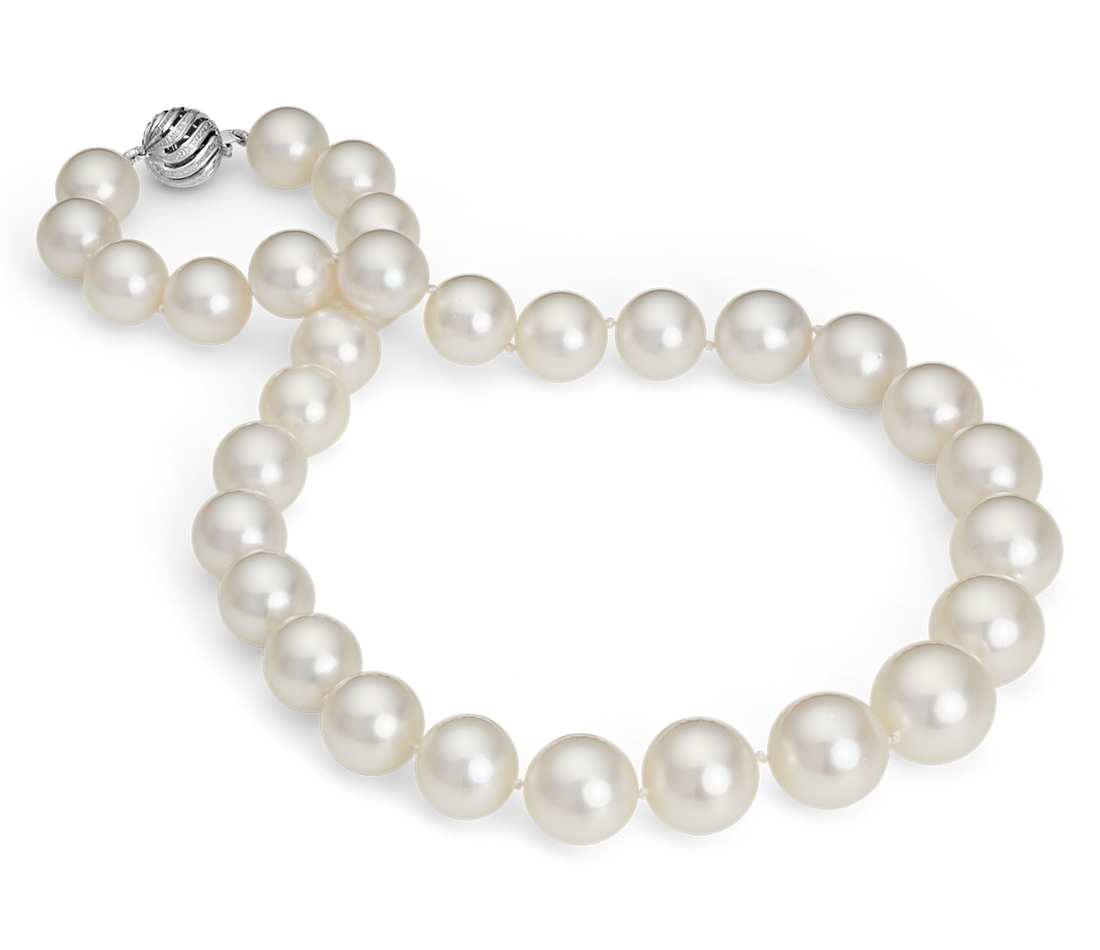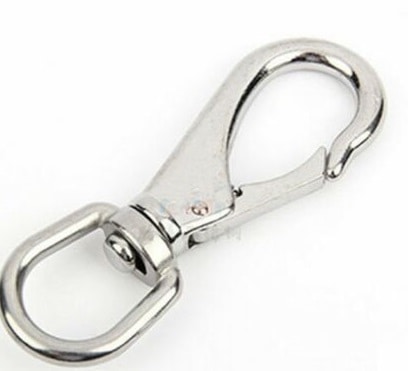
Table of Contents
In the world of jewelry, clasps do more than just fasten; they combine practicality with style. These small but important parts secure and add beauty to your jewelry. Different clasps, like the elegant lobster claw or the detailed toggle clasp, each have their own appeal and function.
Let’s explore the different types of jewelry clasps, highlighting their special features and how to use them.
Types of Jewelry Clasps
There are several types of jewelry clasps, each with its unique design and mechanism. Here are some of the most common ones:
1. Lobster Claw Clasp

Probably the most widely used type of jewelry clasp, the lobster clasp is so called because it resembles a (lobster) ‘claw’. To open the claw, you simply have to push down on the little lever. Releasing the lever will automatically shut the claw. Lobster clasps are spring-loaded and their best feature is that they’re self-closing.
Lobster claws come in a variety of sizes and styles and can also be designed in various shapes. It’s highly functional and perfect for almost all types of jewelry. The size of the clasp should correlate to the size of the jewelry. A small lightweight lobster clasp works well for a similar chain, while a large, thicker chain should have a larger clasp.
2. Bolo Clasp

Bolo clasps are very fashionable and perfect for sliding bracelets or necklaces. They allow you to adjust the jewelry to fit you perfectly. They’re easy to put on and size, giving you options with how you want your jewelry to fit.
Bolo clasps are used in lariat necklaces but most commonly in bracelets. Because of their versatile design, the clasp itself can take a central role in the jewelry.
While the bolo is a sturdy little bead that holds the chains together, the chains themselves can sometimes break, especially if they’re thin.
3. Barrel Clasp

Barrel clasps are also called torpedo clasps. These work via a threading mechanism, where you have to twist the clasp to open and close it. Usually, when the clasp is twisted close, it resembles a barrel, hence the name.
Barrel clasps aren’t ideal for bracelets because it’s difficult to do up with one hand. It’s also not a good option for anyone who has issues with their hands, as it takes some amount of skill to fit the clasp. Even so, barrel clasps are a very safe option and a sturdy clasp for most jewelry.
4. Box Clasp

A box clasp works by inserting a little tab into a box-shaped frame, with a little hinged clasp used to cover the opening. Box clasps are elegant and stylish and integrate seamlessly into the design. They’re commonly used in jewelry like diamond tennis bracelets.
Box clasps can be embellished with gemstones, diamond melees and other decorative elements to suit the style of the overall piece of jewelry. While they are relatively sturdy, they’re not suitable for heavy pieces of jewelry.
Some downsides of the box clasp are that it can get stuck and trying to pull it out can cause the clasp to get damaged. Also, the little hinged lid can break easily.
5. Bead/Ball Clasp

Bead or ball clasps are round in design, often with a tab or bayonet closure. The main benefit of bead clasps is how they look. They can blend in beautifully with most pieces of jewelry and are especially ideal for jewelry featuring beads.
6. Fishhook Clasp

Fishhook clasps are not as common as other types of clasps. They’re quite elegant and can be an integral part of the design, featuring gemstones, diamonds, inlay work or other decorative elements.
Although it looks complicated, it’s essentially a metal hook fitting into a section inside the oval-shaped box. It’s called a fishhook because the hook that goes in is shaped like a fishhook.
This type of clasp is perfect for lightweight necklaces and bracelets. However, as putting them on with one hand can get fiddly, most people prefer them for necklaces.
7. Hook Clasp

One of the oldest and most common types of clasps, the hook clasp is very simple in design. The clasp contains an S-shaped piece of metal that’s open at one end which hooks onto a ring at the other end of the piece of jewelry. It allows you to adjust the length of the chain if there are multiple rings.
Hook clasps are very sturdy and can be used in most types of jewelry. While they don’t look very sophisticated, they’re a common sense type of clasp that serves its purpose.
8. Magnetic Clasp


Magnetic clasps are designed so that both ends of the piece of jewelry contain one half of the clasp. When brought together, these two parts snap shut. Magnetic clasps use strong magnets that hold on securely.
The style of clasp is elegant and can be easily integrated into the overall jewelry design. While magnetic clasps are generally very secure, they can come apart if pulled with force. As a result, it’s best to use this clasp for lightweight jewelry.
The main benefit of magnetic clasps is that it’s very easy to put together with one hand. This makes it especially perfect for bracelets and for people who have dexterity issues.
9. Toggle Clasp

The toggle clasp works simply – a long, thin bar is inserted into the circle vertically then adjusted to go across horizontally. The bar becomes the lock, as it cannot come through the circle unless adjusted accordingly.
Toggle clasps are stylish and have a boho, casual vibe. They’re perfect for gemstone jewelry or statement pieces, where the clasp is a part of the design.
Toggle clasps are perfect for larger, heavier jewelry pieces as this keeps the bar in place. It’s a very secure type of clasp and can hold any type of jewelry. It can get tricky to put a toggle clasp on, especially if you’re doing it with one hand. However, once in place, it’s very secure.
10. Spring Ring Clasp

One of the most commonly used clasps, the spring ring clasp features a circle that works via a spring mechanism. When you pull back on the small lever, a little opening appears allowing you to fit the other end through. Like the lobster clasp, this too is a self-closing clasp.
Small spring ring clasps work well with lightweight chains. While they’re quite secure, they can be annoying to put on, especially if the ring is very small.
11. Swivel Clasp

The swivel clasp is essentially the lobster clasp with a swivel function that allows the clasp to rotate 360 degrees. This makes the clasp perfect for jewelry that move a lot, as the clasp moves easily with the motion.
12. Buckle Clasp

A rare type of clasp, buckle clasps are more about making a statement. Here, the clasp is part of the jewelry and is definitely meant to be eye-catching. Buckle clasps work like traditional buckles, except that it’s all made of metal. They’re quite rare and not one you’ll come across often.
13. Slide Lock Clasp
The Slide Lock Clasp is ideal for multi-strand bracelets and necklaces. It consists of two or more tubes that slide together to lock securely. This design distributes weight evenly across the strands, preventing tangles and ensuring the jewelry sits comfortably on the skin.
Usually made of metal, slide lock clasps can also be decorative. They provide a clean, sleek look without overpowering the jewelry’s design. Known for their reliability and ease of use, these clasps are popular for complex, multi-strand jewelry pieces.
14. T-Bar Clasp
The T-Bar Clasp, or Togle Clasp, is a traditional design that brings elegance and a vintage feel to jewelry. It has a T-shaped bar that fits into a loop or circle to fasten the piece. Commonly used in necklaces and bracelets, it secures well and adds a decorative touch.
This clasp is simple to handle, often requiring just one hand. Its straightforward design and practicality make it a classic choice. Typically made from metal, T-Bar clasps come in various styles, from simple to detailed, suiting different jewelry designs.
Origin and History of Jewelry Clasps
Jewelry clasps have an intriguing history that dates back to ancient civilizations. Originally, they were more than just fasteners; they showcased craftsmanship and status. In ancient Egypt, clasps often took the shape of symbols like scarabs and lotuses, serving as symbols and status indicators, made from precious metals and stones.
In the Roman and Greek eras, clasps became more decorative. The Romans, known for their elaborate jewelry, created various clasp designs, including the fibula, similar to today’s safety pin, but more ornate.
During the Middle Ages and Renaissance, as jewelry became more elaborate, there was a greater need for intricate and secure clasps. The box clasp, for example, was developed then, catering to heavier, more ornate pieces.
In the Victorian era, the industrial revolution made jewelry and clasps more widely available. This time saw a boom in clasp variety, including the introduction of the spring ring clasp, still popular today.
The 20th century, marked by the rise of fashion jewelry, saw clasps evolve into key design elements. Designers began experimenting with various materials and styles, leading to modern clasps like lobster clasps, toggle clasps, and magnetic clasps.
Throughout history, jewelry clasps have transformed from simple fastenings to complex art forms, mirroring technological progress, fashion trends, and cultural changes. They represent human creativity and the continuous desire to beautify oneself with practical, attractive items.
Which is the Most Secure Jewelry Clasp?
The lobster claw clasp is often seen as the most secure jewelry clasp. It’s well-liked for its strong hold, ease of use, and flexibility. This clasp works with a spring-loaded mechanism, which is both dependable and long-lasting.
To open it, you press a small lever that tightens a spring, and releasing it automatically shuts the clasp, creating a secure lock. This design helps prevent it from opening accidentally, making it great for keeping valuable jewelry like necklaces and bracelets safe.
The box clasp is another highly secure option, commonly found in more expensive jewelry. It has a small metal box where a wedge-shaped metal piece clicks into place. For extra security, many box clasps come with an additional safety latch. This feature is especially useful to stop the jewelry from falling off if the main clasp opens by mistake.
Both these clasps are popular because they hold jewelry securely without compromising on looks. When choosing between them, it often comes down to what jewelry you’re using them for, your personal preference for ease of use, and how much security you need. For heavier or more valuable pieces, these clasps are the top choices for ensuring the jewelry stays secure.
Wrapping Up
Choosing the right jewelry clasp is important as it combines practical use with style. Whether it’s the secure lobster claw, the elegant box clasp, or the simple spring ring, each type adds its own touch to your jewelry, making it both more beautiful and easier to wear.









